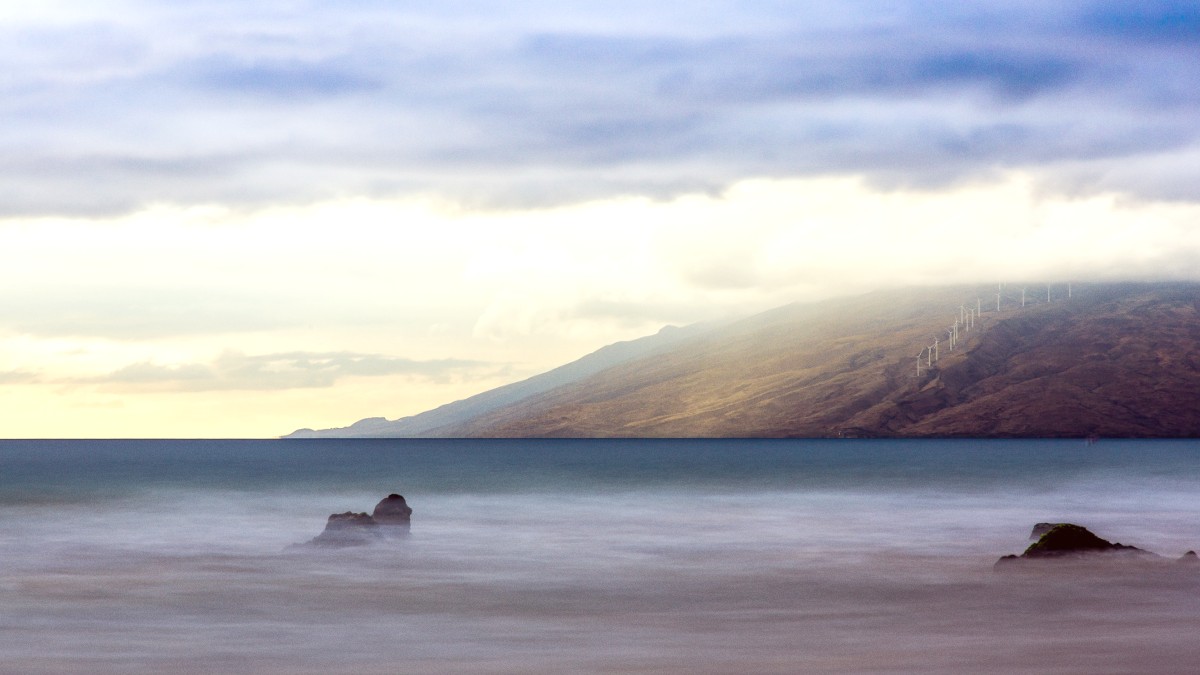
Hawaii, USA
Fresh fish, like ahi (tuna) and mahi-mahi, taro, breadfruit, sweet potato, pineapple, papaya, coconuts, limu, pork, and chicken. Local farming is part of the island's food supply.
Moloka'i's cuisine often has savory, umami-rich tastes, sometimes with a hint of sweetness or sourness. Common seasonings include shoyu, garlic, ginger, green onions, and Hawaiian salt. The food generally remains flavorful without being overly spicy.
Moloka'i's small size means less regional variation compared to larger islands. The island's culinary focus rests on authentic local Hawaiian dishes and "local comfort food" styles.
Meal times are similar to those on the U.S. Mainland: Breakfast (7-10 AM), Lunch (11 AM-2 PM), and Dinner (5-9 PM). Many smaller eateries may close early, so plan dinner accordingly.
Many local eateries mainly offer take-out or grab-and-go options rather than extensive dine-in seating.
This dish features pork (or chicken or fish) and salted butterfish wrapped in taro leaves, then ti leaves. It is slow-cooked in an imu (underground oven) or steamed. The result is tender, flavorful meat and greens.
Traditionally cooked in an imu.
This shredded, smoky, slow-cooked pork is traditionally prepared in an imu. Kalua pig is a staple at luaus and appears frequently in plate lunches.
A luau and plate lunch staple.
Cubed raw fish, usually 'ahi (tuna), seasoned with soy sauce, sesame oil, limu, and other ingredients. You find fresh poke in grocery stores and some local eateries.
Fresh raw fish delight.
Portuguese-style doughnuts, often served warm and coated in sugar.
Hawaiian-style steamed or baked buns with savory fillings, like char siu pork.
Moloka'i has no traditional "fine dining" restaurants. The dining scene is casual and focuses on serving local, authentic food.
Hotel Moloka'i Restaurant (Hiro's Ohana Grill) has breakfast, lunch, and dinner with a mix of local and American cuisine. Paddlers Inn Bar & Grill is a casual spot in Kaunakakai, often with live entertainment.
Moloka'i Burger serves burgers, fries, and local plate lunches. Kamoi Snack-n-Go is popular for shave ice, snacks, and plate lunches. Food trucks occasionally appear.
Held on Saturdays in Kaunakakai. This market is the best place for local produce, crafts, and prepared foods.
Opportunity to purchase directly from local growers.
Friendly Market Center and Misaki's in Kaunakakai are the main places for groceries and local prepared foods.
Good selection of island staples.
Some Japanese, Chinese, Filipino culinary traditions.
You will not find a wide range of distinct international restaurants.
Moloka'i's food scene mainly features Hawaiian and American comfort food.
Emphasis on familiar and hearty island dishes.
This often proves the best option. Stay in accommodation with a kitchen and purchase groceries to prepare meals tailored to your needs.
Farmers markets are helpful for fresh produce.
Always ask staff about ingredients and preparation methods. Communicate your allergies clearly and politely.
Many local dishes involve rice, which is naturally gluten-free.
Staying in accommodations with a kitchen is highly recommended for travelers with specific dietary needs, allowing full control over ingredients and preparation.
When dining out, communicate clearly and politely with staff about your dietary restrictions. Be prepared for limited options and potential cross-contamination.
Some local cultural centers or community groups may have introductory hula or lei making lessons.
Informal opportunities to learn the ukulele may exist through local contacts.
This center occasionally offers workshops for both residents and visitors, focusing on local crafts and art forms.
An annual cultural festival, usually held in May. This event celebrates Moloka'i as the birthplace of hula and features performances, craft demonstrations, and food.
Check local community calendars for other fairs.
This represents an unique night-time experience. You purchase freshly baked, warm sweet bread from a back window after the main bakery closes. It is a local ritual and a must-try.
Look for small, informal roadside stands selling fresh produce or snacks.
The Halawa Valley Falls Cultural Hike, led by descendants of the valley, offers deep insight into local history, traditions, and the land, with proceeds directly supporting the community.
No formal Hawaiian language schools cater specifically to tourists. However, learning a few basic Hawaiian phrases, like "Aloha" and "Mahalo," is appreciated by locals.
Interacting respectfully with locals at markets or community gatherings serves as a form of immersion, allowing you to learn about daily life and culture.
Moloka'i’s food scene is about authenticity, not luxury. Embrace the slow pace and enjoy the real taste of the island.